Elements of Wargaming: Putting the “Game” in Wargaming
Wednesday , 2, March 2016 Wargames 4 CommentsWargaming is separated from other games in its intensity and its application—For all of the fun and good times, Wargames are training tools for the historian and the military mind. Serious business. However, the reason it is so useful and productive for their purposes is the same reason that school classes are effective for teaching students: It simulates the holistic experience gained by command without the grievous cost. The historian can come to appreciate the risks taken by Oda Nobunaga and his success against unreasonable odds at the battle of Okehazama, or the craftiness exhibited in the Siege of Vienna, or the ferocity and valor of the soldiers and commander at the Battle of Tolvajärvi; the military mind can come to understand the horror of indecision that can bog down even a fair fight after a few sour turns, or the importance of perspective as poorly-trained troops or shoddy sub-commanders may well surrender or break in the heat of a charge despite the victory being in-hand should they hold… all without sacrificing soldiers.
Most competitive Wargames are set up with a balanced beginning, either by assigning a points value to each side which the players can spend assembling an array of different units of training and equipment and faction and skill. Many have preset armies, lists, or rules for this construction. Further, almost all have randomized tables for generating objectives or scenarios to explain what the armies are clashing over, or how they have come to meet there—many historical games have information available to allow real scenarios to be played out from the sands of time.
This provides players with the ability to experiment and tinker: Should you take along two weaker units versus one stronger unit? Maybe it’s roughly even, but one would be better in a scenario with multiple objectives versus a single objective to capture. What would be best? The puzzles begin, and the game in question comes into play; a balanced game will be possessed of a high degree of ambiguity of optimum preparation, with a corresponding variety of play-styles which can scrap their way to the top of competition. With much to consider and a variety of approaches both in planning and execution, to say nothing of assembling either historical or hypothetical scenarios to explore, a player might gain a fair amount of experience and understanding—removing the humanity of the playing pieces of course. These scenarios and the tinkering surrounding is why I love Wargames; they are much like constantly-evolving puzzles.
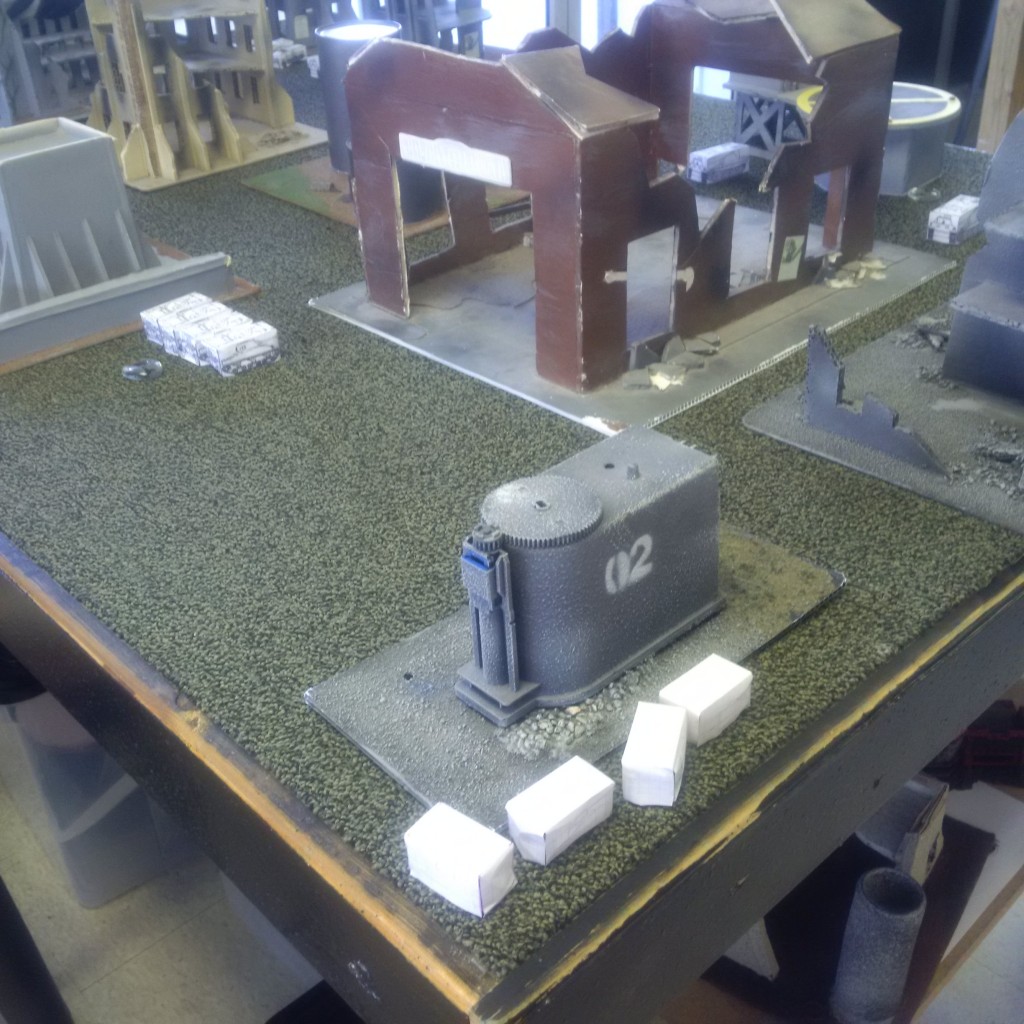
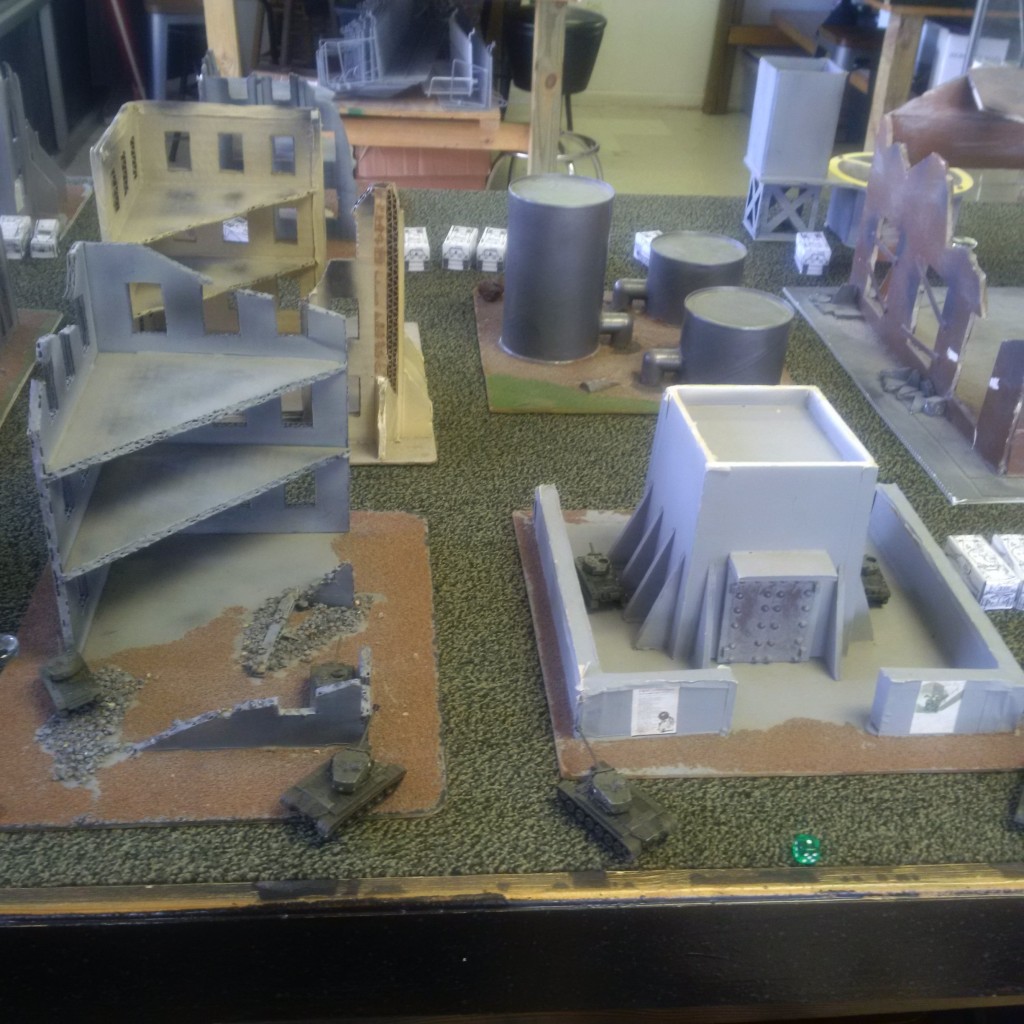
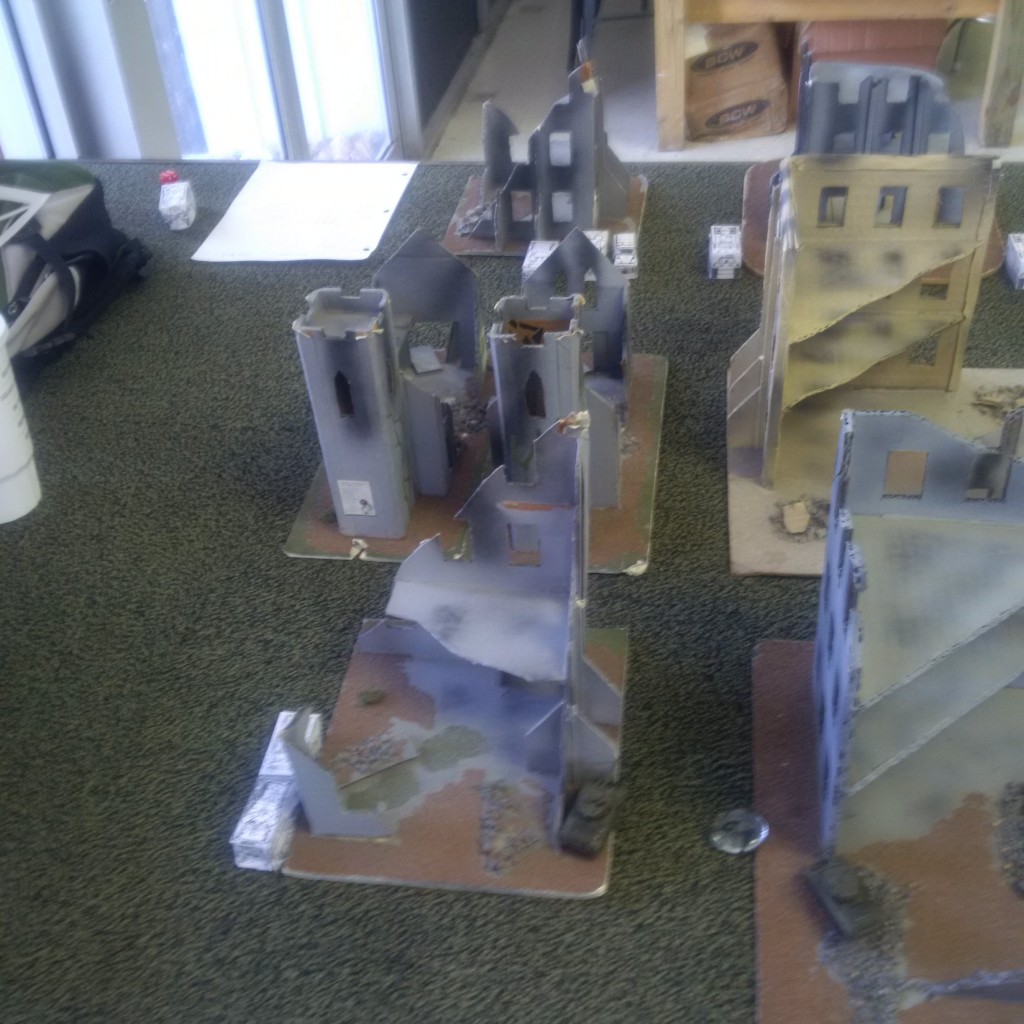 In a recent game, a friend of mine and I decided to experiment. When we set up the terrain, we agreed to test out some of the Flames of War terrain rules; the bases of nearly all of the structures were dangerous to tanks, slowing and potentially stalling out their movement; we did this to see how effective one of the upgrades for the tanks was, whether it was worth the points or not when writing up army lists—My army was almost entirely equipped with bonuses when trying to ignore the terrain effects, while his was not. He played Americans, deploying a hard defensive line on his left flank centered around some expensive, kitted-out heavy tanks in very center, with a fast-moving Shermans and Stuart light tanks on his right; he was concerned about his lack of mobility on the more crowded flank. Opposite him I lined up aggressively, my force made of of Panthers and Panzer IVs poised to advance through the broken out buildings and treacherous terrain, intending to test out the gear.
In a recent game, a friend of mine and I decided to experiment. When we set up the terrain, we agreed to test out some of the Flames of War terrain rules; the bases of nearly all of the structures were dangerous to tanks, slowing and potentially stalling out their movement; we did this to see how effective one of the upgrades for the tanks was, whether it was worth the points or not when writing up army lists—My army was almost entirely equipped with bonuses when trying to ignore the terrain effects, while his was not. He played Americans, deploying a hard defensive line on his left flank centered around some expensive, kitted-out heavy tanks in very center, with a fast-moving Shermans and Stuart light tanks on his right; he was concerned about his lack of mobility on the more crowded flank. Opposite him I lined up aggressively, my force made of of Panthers and Panzer IVs poised to advance through the broken out buildings and treacherous terrain, intending to test out the gear.
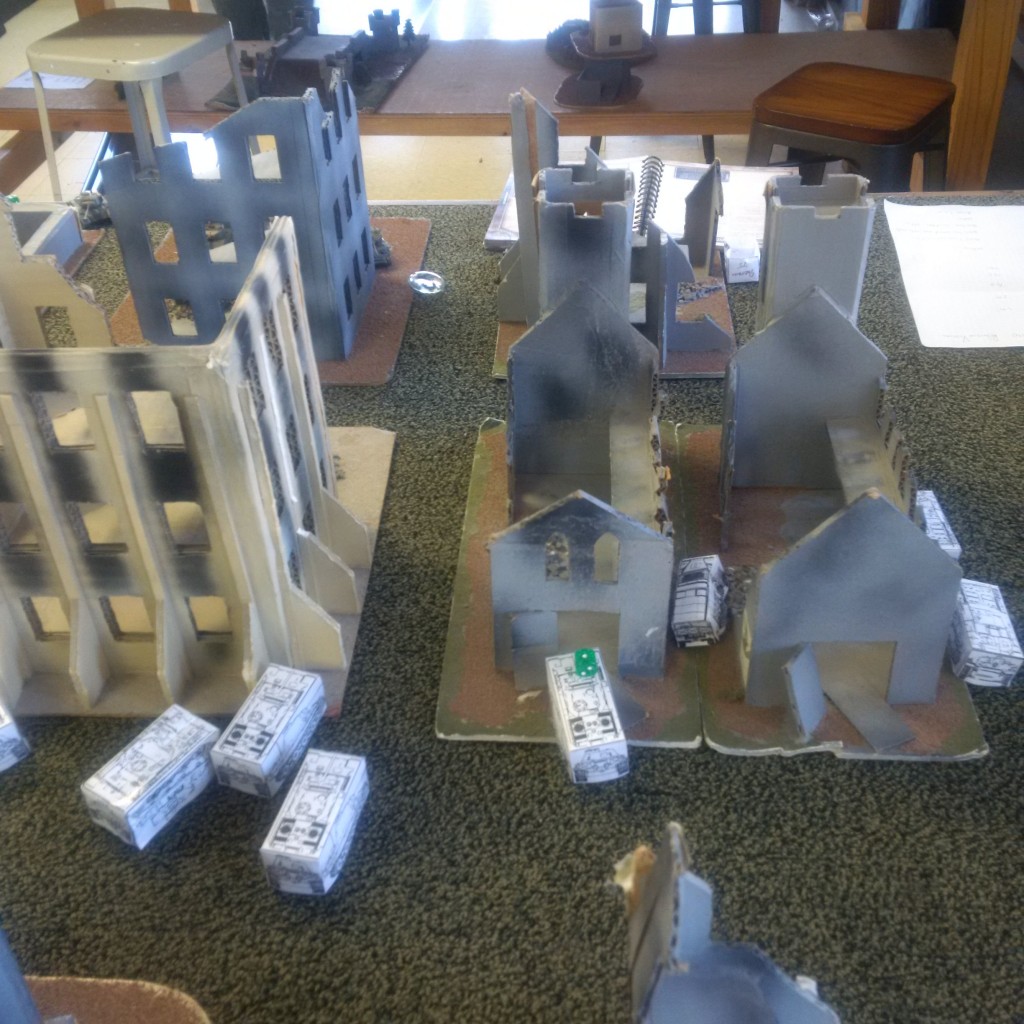
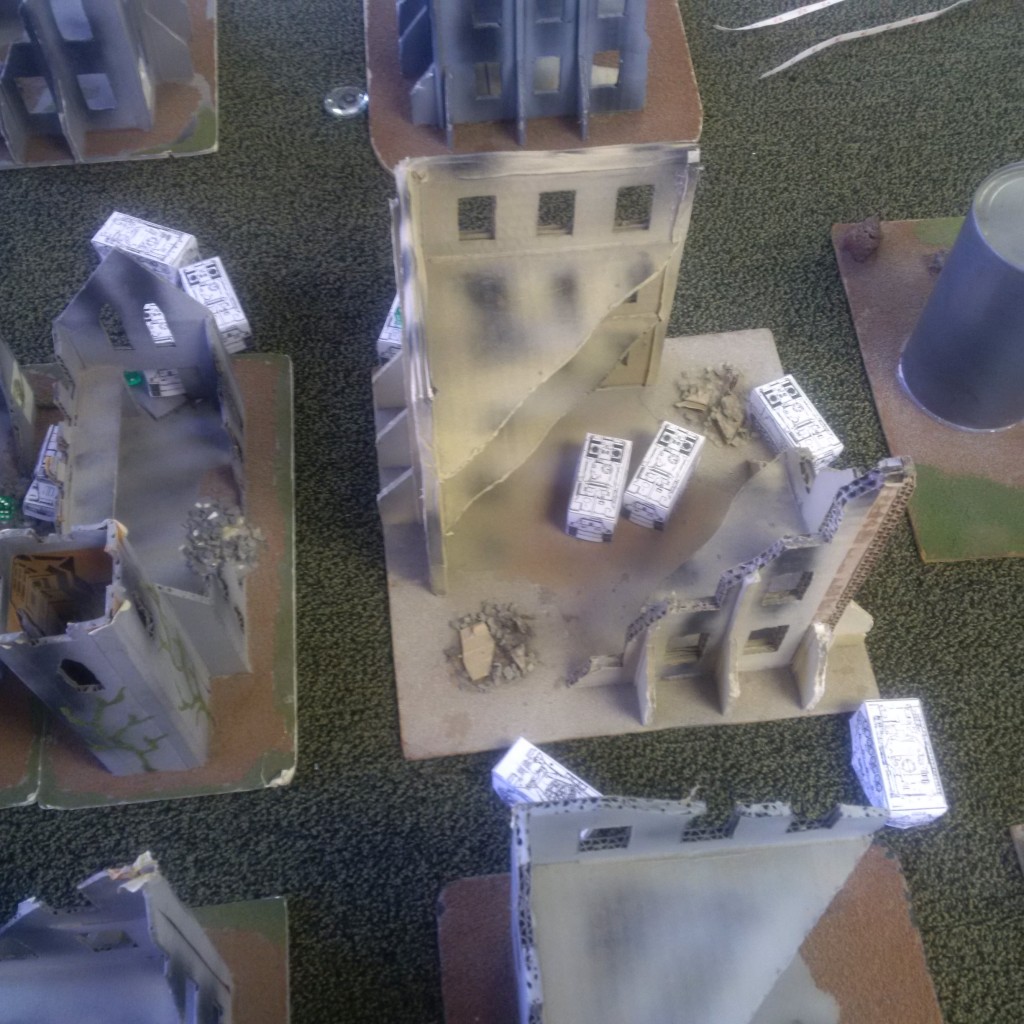
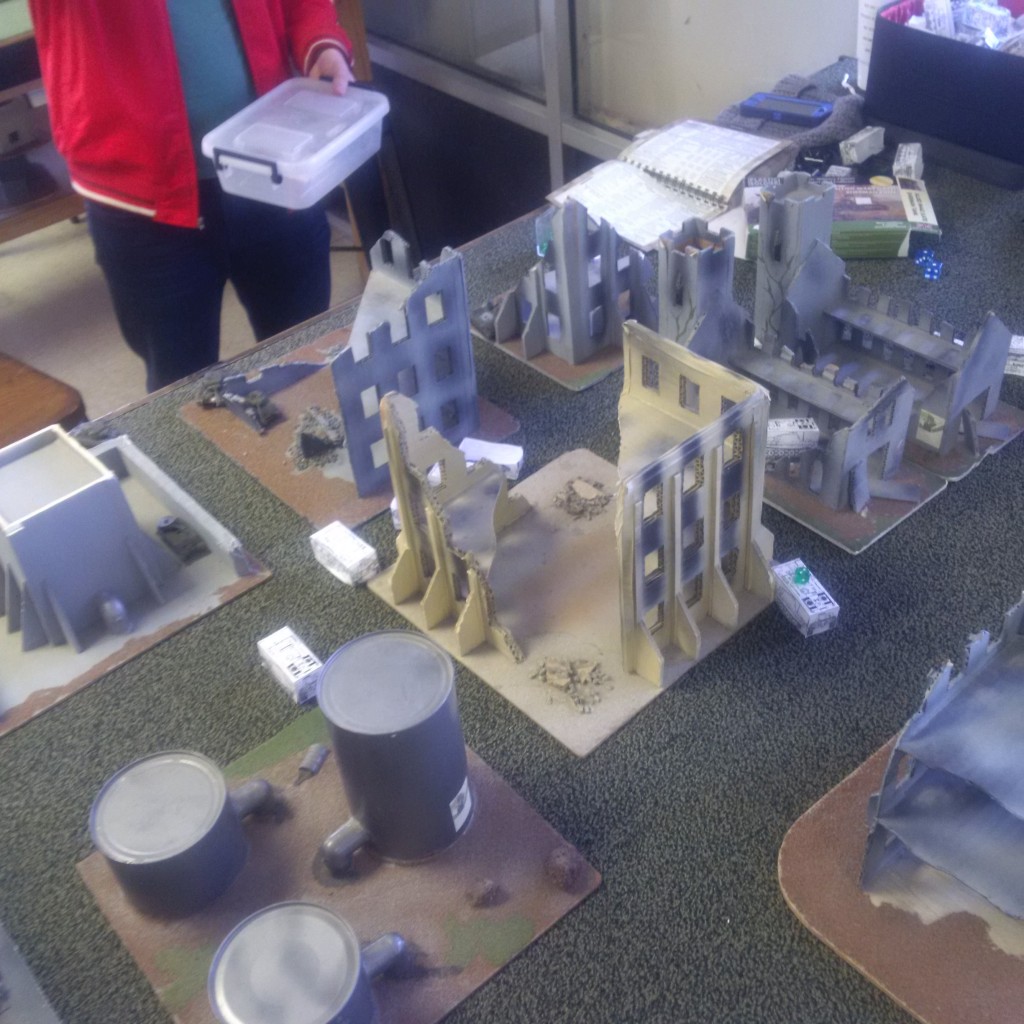 My tanks by and large slid through the terrain without difficulty, though the Panzer IVs and one particularly incompetent Panther ran into a great deal of difficulty—The bonus was generally effective but it still carries some risk to tell your troops to dive into the terrain difficulties; seemed quite balanced. Our tanks traded shots back and forth with my forces generally getting the better of it by turning his flank through wading through the terrain. Through the midgame, most of the action was on my right flank, his left, and I got the better of it. This was an objective match, with his objective severely threatened by my encroaching Germans and in the later turns the focus turned to the objective on my left flank, where his conga line of tanks threaded along between some dangerous terrain.
My tanks by and large slid through the terrain without difficulty, though the Panzer IVs and one particularly incompetent Panther ran into a great deal of difficulty—The bonus was generally effective but it still carries some risk to tell your troops to dive into the terrain difficulties; seemed quite balanced. Our tanks traded shots back and forth with my forces generally getting the better of it by turning his flank through wading through the terrain. Through the midgame, most of the action was on my right flank, his left, and I got the better of it. This was an objective match, with his objective severely threatened by my encroaching Germans and in the later turns the focus turned to the objective on my left flank, where his conga line of tanks threaded along between some dangerous terrain. 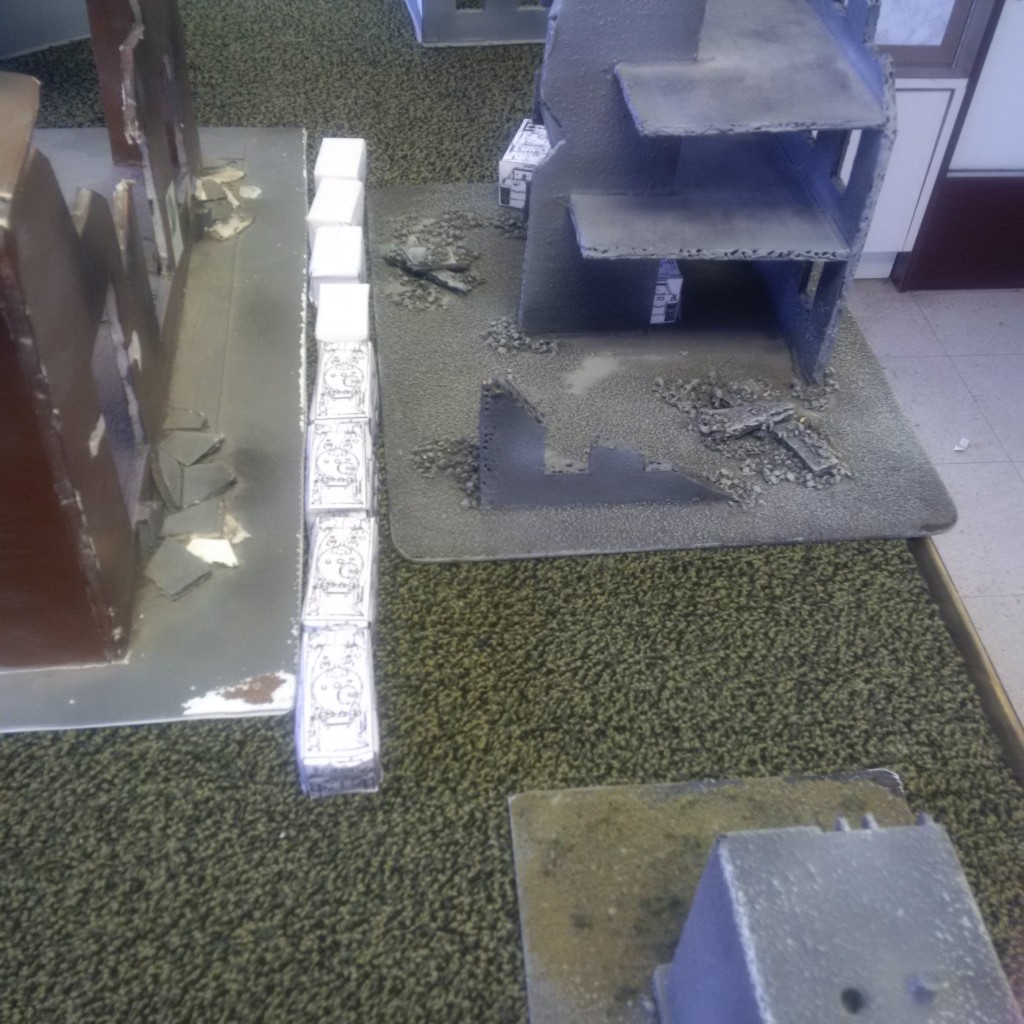
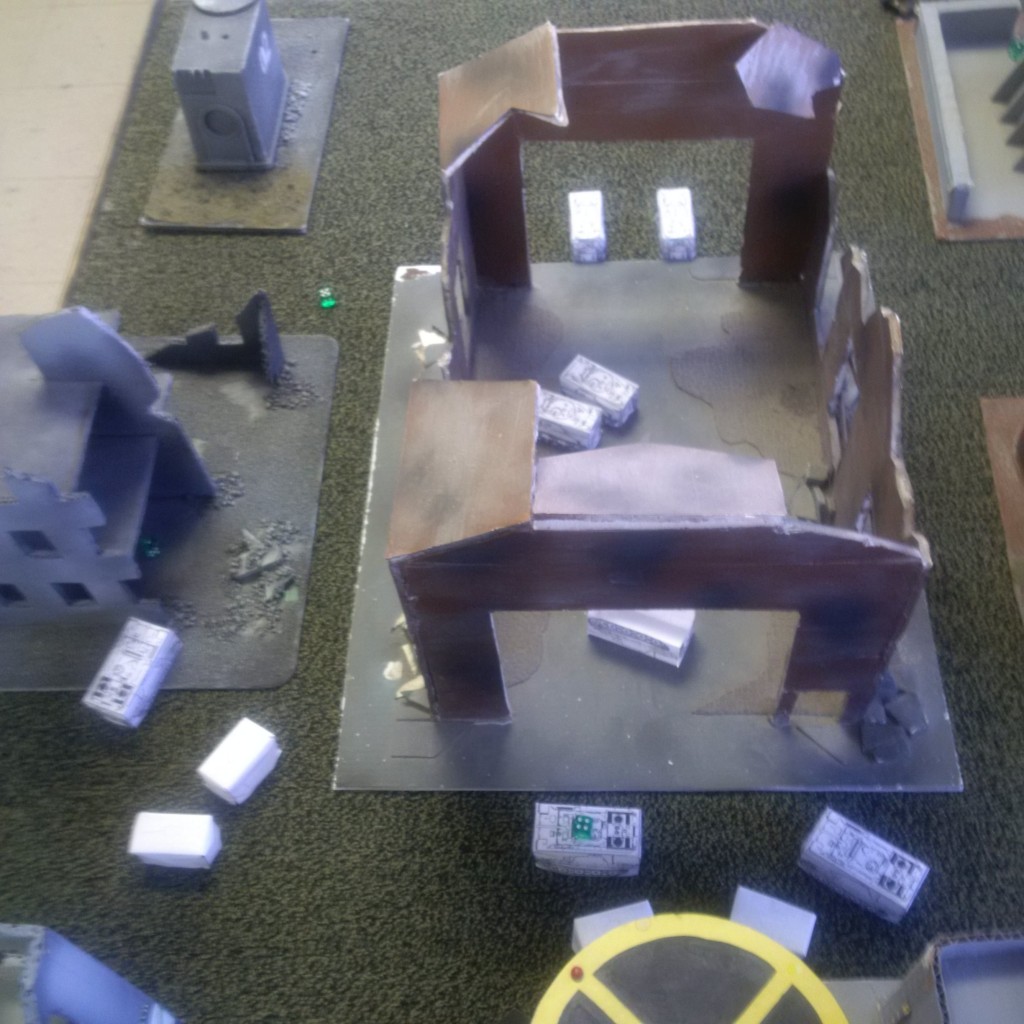 I didn’t quite get my defenders situated to throw them back wholesale, but I stalled out one of the tanks at the front of the line and he broke into the terrain to get around. Fortunately for me, my outnumbered defenders held the objective thanks to the Stuarts’ weak guns being outclassed by the Panthers’ armor. He conceded the game after his troops on this side were worn down to numerical parity, with the bulk of his flank severely hampered by his decision to enter the terrain.
I didn’t quite get my defenders situated to throw them back wholesale, but I stalled out one of the tanks at the front of the line and he broke into the terrain to get around. Fortunately for me, my outnumbered defenders held the objective thanks to the Stuarts’ weak guns being outclassed by the Panthers’ armor. He conceded the game after his troops on this side were worn down to numerical parity, with the bulk of his flank severely hampered by his decision to enter the terrain.
The outcome was heavily in my favor from the beginning—The terrain had been set up to favor me significantly with my army list. The experiment panned out to show that the upgrade to the Panthers was generally worth taking for squads doing some slogging but probably not everyone. I learned a bit about positioning and getting stuck in awkward positions—My list had the advantage of a tow vehicle which I made some use of, regardless of the upgrades. This was generally understood to be a learning experience. As you can tell from my previous articles, Flames of War is a Wargame I am learning with my friend at present. We’ll be adding in the full array soon, for all the fun World War II action that it promises and delivers. Many of the elements which I’ve discussed in my previous articles can be found in this match, from sportsmanship to studying, and also importantly we see the game emerging as a game and the benefits of seeing a game applied as a teaching tool: engagement and experience.
-Zac
One of the design challenges of my current project is depicting non-obvious canalization effects present in Normandy 1944. The importance of roads are generally poorly understood in most tactical games. Perhaps you might be interested.
-
That does sound interesting! I’ve not written on the subject of terrain, but it has been a puzzle for my thinking since I began wargaming. Hit me up if you’d like to conspire.
At its core, wargaming is nothing more than an insanely complex series of interlocking games of rock-paper-scissors.
To whit, you touch on one of the other hard to quantify aspects of the puzzle. If you play that same scenario in a less urban environment – one where terrain effects are limited to topography, woodlands, and the odd farm house – then you’ve spent considerable points on a benefit (good in rough ground) that do you no good on the rural table.
An army list crafted to be effective under all circumstances will handily beat or get trounced by an army list built to excel at one particular aspect of warfare. You could specialize for terrain or for opponent (i.e. a list that specializes at beating mechanized forces will struggle against an army composed entirely of infantry) or any number of aspects of the game.
You might consider pitting those same forces against each other on a more wide-open table and see if the Germans can do as well when the environment doesn’t suit their strengths.
Of course, as the winning general, you could always refuse to do so on the grounds that good generals only ever fight battles on the ground of their choosing…after all, your tactics didn’t *lose* this battle, but it was your *strategy* that won it for you.